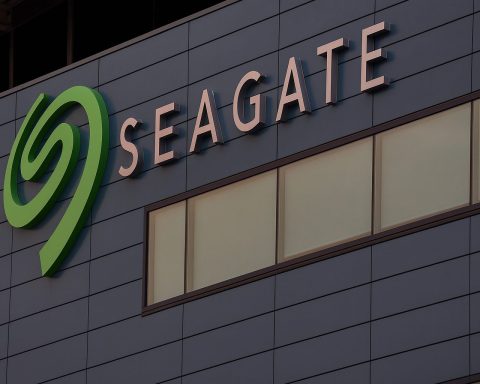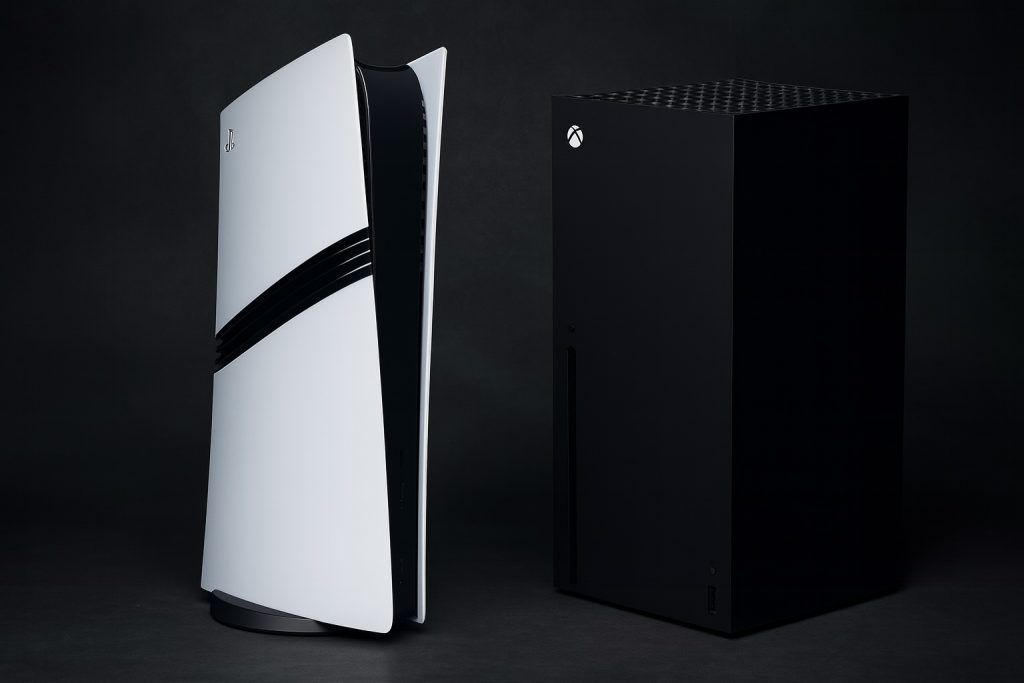Key Facts (as of 2 October 2025)
- Stock price & daily trading range: On 2 Oct 2025, Microsoft (NASDAQ: MSFT) traded around US$519 per share in pre‑market trading and moved between US$511.69–US$520.51 during the day. The stock’s previous close was US$517.95, and the 52‑week trading range was US$344.79–US$555.45.
- Market capitalisation & valuation: Microsoft’s market capitalisation topped US$3.86 trillion. It traded at a price‑to‑earnings (P/E) ratio of about 38 (TTM) and a forward dividend yield of roughly 0.70 % (dividend of US$3.64).
- 1‑year analyst target: Yahoo Finance’s consensus 12‑month target price was about US$617.50 per share.
- Earnings & payout: The company’s trailing‑12‑month earnings per share (EPS) stood at US$13.67. The next earnings date reported on Yahoo Finance was late October 2024 (results for FY2025 Q1), and the ex‑dividend date was 20 Nov 2024
- Beta & volatility: A beta of 0.92 indicated that Microsoft shares were slightly less volatile than the broader market.
Market Performance & Valuation
Microsoft’s share price around US$519 on 2 Oct 2025 meant that the stock had already recovered significantly from the prior 52‑week low of US$344.79. At this level, the company’s market value stood above US$3.8 trillion, reinforcing its position as one of the world’s most valuable publicly traded companies.
The stock’s P/E ratio of ~38 (TTM) suggested a premium valuation relative to the broad market but was typical for mega‑cap technology firms benefiting from high growth expectations in cloud computing and artificial intelligence. The 1‑year consensus target price of US$617.50 implied roughly 19 % upside from the early‑October trading price. With a dividend yield of ~0.70 % and strong cash flow generation, Microsoft continued to return some capital to shareholders while investing heavily in AI and data‑centre expansion.
Major News and Developments (late Sept – 2 Oct 2025)
Corporate restructuring & leadership changes
- Commercial business reorganization (Oct 1 2025): Microsoft announced a major restructure of its commercial operations. Chief Commercial Officer Judson Althoff was elevated to chief executive of Microsoft’s commercial business, allowing CEO Satya Nadella to focus on technical work and AI innovation. The reorganization combined sales, marketing and operations into a single unit and was designed to free engineering leaders to concentrate on data‑centre build‑out, system architecture and AI product development. Nadella said the change was necessary because the AI platform shift requires building the next frontier while continuing to grow the current commercial business [1].
Product and subscription changes
- Microsoft 365 Premium & Copilot integration (Oct 1 2025): Microsoft launched Microsoft 365 Premium, a US$19.99 per month subscription for individuals that bundles the Copilot AI assistant across Outlook, Excel, Word and other apps. The new tier includes the highest Copilot usage limits, features such as “Researcher,” “Analyst,” and “Actions,” 1 TB of cloud storage and advanced security tools [2]. Existing Copilot Pro subscribers (who paid US$20/mo) could switch to Premium at no extra cost [3]. The move reflected Microsoft’s strategy to integrate AI deeply into its productivity suite and to monetise Copilot more effectively.
- Xbox Game Pass price increases (late Sept 2025): Microsoft raised the price of its Xbox Game Pass Ultimate subscription by 50 % to US$29.99 per month. The company added more first‑day game releases (over 75 premium titles per year) and expanded cloud‑gaming features in the revamped tiers labelled “Essential” and “Premium.” The changes signalled Microsoft’s confidence in subscription gaming and its plans to integrate more exclusive content (including Call of Duty titles) into the service [4].
Cloud & AI ecosystem expansion
- Unified AI marketplace (Sept 25 2025): Microsoft merged its separate marketplaces for AI tools into a unified Microsoft Marketplace. The new store offers business‑oriented AI apps (built on Azure or as independent agents) to corporate buyers using their existing Microsoft billing relationships. According to marketing executive Alysa Taylor, apps must pass security and compliance reviews, and Microsoft charges a one‑time publishing fee rather than a revenue commission [5]. The platform streamlines distribution for developers and could accelerate adoption of AI agents in business workflows.
- U.S. government discount deal (Sept 2 2025): Microsoft reached an agreement with the U.S. General Services Administration (GSA) to provide federal agencies with discounted cloud services. The arrangement could save the government up to US$3 billion in the first year and gives existing federal users free access to Microsoft Copilot. The deal also offers discounted prices for Microsoft Sentinel (security information and event management) and Azure Monitoring and runs through 2032 [6]. Agencies have until September 2026 to opt in [7].
- International investment (context from Oct 2024): In late 2024 Microsoft announced plans to invest €4.3 billion (about US$4.8 billion) to expand AI and cloud infrastructure in northern Italy. The initiative, described by Vice Chair Brad Smith, would create one of Europe’s largest data‑centre regions and act as a hub for the Mediterranean and North Africa [8]. Microsoft and BlackRock also planned to create a US$30 billion fund for AI data‑centre investments, underscoring the long‑term capital intensity of the AI boom [9].
AI ecosystem and competitor developments
- OpenAI valuation & fundraising (Oct 1 2025): OpenAI, which provides the technology behind Microsoft’s Copilot, reached a US$500 billion valuation after employees sold around US$6.6 billion of shares to a consortium including Thrive Capital, SoftBank, Dragoneer, Abu Dhabi’s MGX and T. Rowe Price [10]. This figure marked a sharp increase from its previous US$300 billion valuation. OpenAI’s revenue in the first half of 2025 was estimated at US$4.3 billion, suggesting rapid growth [11]. Competition for AI talent remained fierce; the article noted that Meta had invested billions of dollars into Scale AI and recruited its CEO to lead its super‑intelligence unit [12].
- Samsung & SK Hynix partnership with OpenAI (Oct 2 2025): Shares of South Korean chipmakers Samsung Electronics and SK Hynix jumped after they secured a deal to support OpenAI’s Stargate data‑centre project. The partnership will build two data centres in South Korea and boost demand for high‑bandwidth memory chips. Analyst Jeff Kim at KB Securities commented that the deal could reduce concerns about memory‑chip prices and strengthen South Korea’s position as an AI hub [13]. This news highlights the supply‑chain investment needed to support Microsoft’s AI ambitions, since OpenAI relies on advanced chips and data‑centre capacity.
- Meta’s use of AI interactions for personalisation (Oct 1 2025): Meta announced that, beginning 16 Dec 2025, it would use interactions with its generative AI tools to personalise content and advertising across Facebook and Instagram. Users would be informed on 7 Oct and cannot opt out [14]. While not directly related to Microsoft, this illustrates how major platforms are monetising AI interactions, putting competitive pressure on Microsoft to deliver compelling AI experiences within its own ecosystem.
Broader market context
- AI stock rally (July 30 2025): Following strong quarterly results from Microsoft and Meta, leading AI stocks collectively gained around US$500 billion in market value. Microsoft shares surged 8 % and Meta 9 %, adding US$288 billion and US$152 billion to their valuations respectively. The rally also lifted Nvidia and Amazon, showing that investors view AI investments as a key growth driver [15]. This momentum carried through the following months and contributed to Microsoft’s elevated share price heading into October.
Analyst Commentary and Forecasts
The consensus view among Wall Street analysts remained bullish on Microsoft due to its leading positions in cloud computing and productivity software, accelerating adoption of Copilot and generative AI, and solid balance sheet. Although detailed analyst notes were not available in the connected sources, several trends can be inferred:
- Earnings momentum and AI monetisation: Analysts pointed to Microsoft’s “blowout” quarter in July 2025, when Azure cloud revenue exceeded expectations, as evidence that AI investments were paying off [16]. The roll‑out of Copilot across Microsoft 365 and the new Premium tier provides an additional revenue stream. The reorganisation of Microsoft’s commercial business underscores management’s intent to prioritise AI development [17].
- Price targets & ratings: Yahoo Finance’s consensus 12‑month target of US$617.50 implies moderate upside from the current price
finance.yahoo.com. Most major brokerages reportedly maintain “buy” or “overweight” ratings, citing growth in cloud services, AI, and subscription gaming. However, valuations above 35 × earnings mean expectations are high, and any slowdown in Azure or consumer spending could pressure the stock.
- Risks and headwinds: Key risks include regulatory scrutiny (antitrust and privacy), potential economic downturn affecting IT spending, and competition from Amazon, Google and emerging AI entrants. The integration of OpenAI technology also subjects Microsoft to execution risk and competition for AI talent [18]. Macro‑economic factors, such as interest‑rate expectations and geopolitical tensions (e.g., trade policies with China or the U.S. presidential election), could influence investor sentiment.
Conclusion
As of 2 Oct 2025, Microsoft remained at the forefront of the generative‑AI revolution. Its market value exceeded US$3.8 trillion and the stock traded near US$520, reflecting investor confidence and strong execution in cloud and AI businessesfinance.yahoo.com. Recent news underscored aggressive moves: restructuring the commercial business to prioritise AI development [19], launching Microsoft 365 Premium to monetise Copilot [20], raising Xbox subscription prices [21], and expanding its AI marketplace and government sales [22] [23]. These initiatives, combined with robust AI-sector tailwinds and strategic partnerships, have positioned Microsoft for continued growth, though high valuations and competitive and regulatory risks remain.
References
1. www.reuters.com, 2. www.reuters.com, 3. www.reuters.com, 4. www.reuters.com, 5. www.reuters.com, 6. www.reuters.com, 7. www.reuters.com, 8. www.reuters.com, 9. www.reuters.com, 10. www.reuters.com, 11. www.reuters.com, 12. www.reuters.com, 13. www.reuters.com, 14. www.reuters.com, 15. www.reuters.com, 16. www.reuters.com, 17. www.reuters.com, 18. www.reuters.com, 19. www.reuters.com, 20. www.reuters.com, 21. www.reuters.com, 22. www.reuters.com, 23. www.reuters.com








